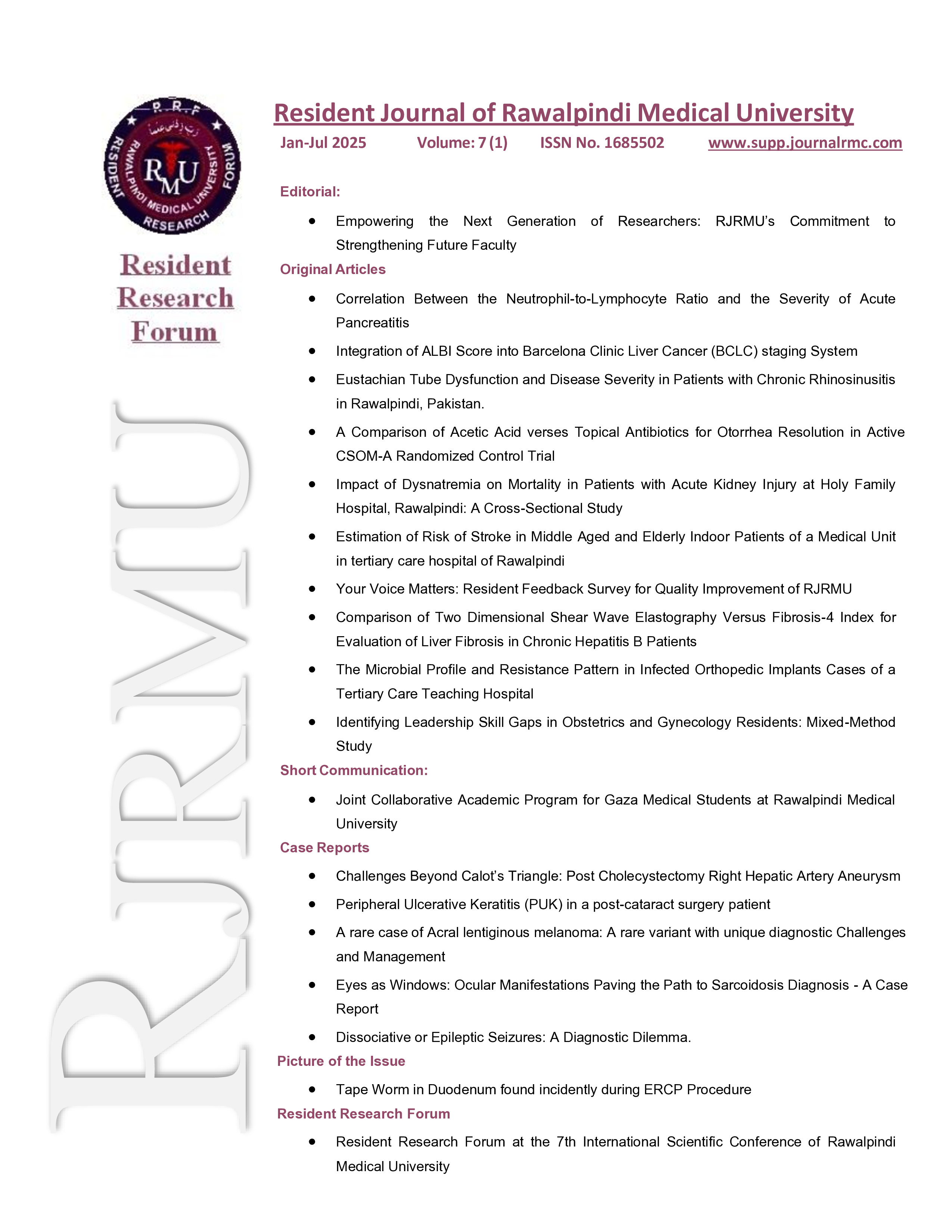Abstract
Background: Stroke is a major cause of disability and mortality worldwide, with South Asian countries, including Pakistan, disproportionately affected. Identifying high-risk patients is critical to enable early intervention and reduce the stroke burden.
Methods: A cross-sectional study was conducted over five months at Medical Unit-II, Holy Family Hospital, Rawalpindi. Seventy-five inpatients aged 45-80 years with stroke risk factors, such as hypertension, diabetes, smoking, atrial fibrillation, dyslipidemia, and a family history of cardiovascular disease, were included. Data collection utilized the American Stroke Association (ASA) Stroke Risk Assessment Tool. Patients were categorized into low (score 1–5), moderate (score 6–9), and high-risk groups (score = 10). Data were analyzed using SPSS version 25.0, with t-tests and Chi-square tests applied to determine significant associations.
Results: The mean age of the study population was 62.8 ± 9.6 years, with nearly equals representation of males (49.3%) and females (50.7%). A sedentary lifestyle (68%) and hypertension (56%) were the most prevalent risk factors. Of the participants, 45.3% were classified as high-risk, with a significant association between age and high-risk score (p < 0.05). Older age groups (65–80 years) showed higher frequencies of high stroke risk scores.
Conclusions: This study indicates that a significant proportion of middle-aged and elderly patients with established risk factors are at high risk for stroke. Implementing routine use of the ASA Stroke Risk Assessment Tool in clinical settings may facilitate early risk identification and targeted prevention, potentially reducing stroke incidence.

This work is licensed under a Creative Commons Attribution-ShareAlike 4.0 International License.
Copyright (c) 2025 Resident Journal of Rawalpindi Medical University

